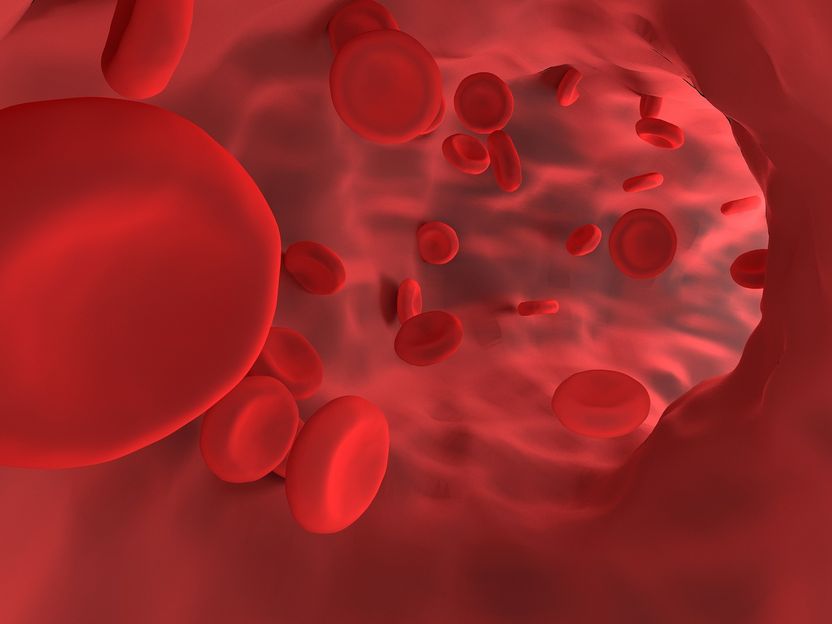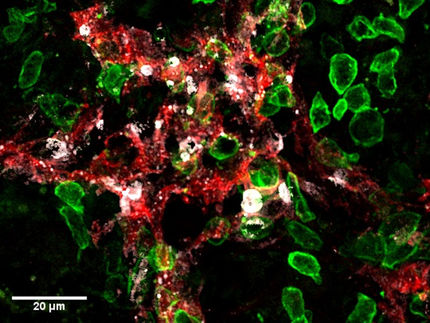Bioactive site of vasoinhibin identified: possible application as a drug for cancer and retinal diseases
Researchers identified the bioactive site of vasoinhibin
Advertisement
Researchers from the Institute of neurobiology at the National University of Mexico in Querétaro and the Institute of Clinical Chemistry at Paracelsus Medical Private University in Nuremberg identified the bioactive site of vasoinhibin, a natural protein that inhibits the growth of new blood vessels. Based on this discovery, vasoinhibin analogues were generated that could become effective drugs for the treatment of diseases whose progression also depends on excessive blood vessel growth or vascularization, such as cancer, diabetic retinopathy, and rheumatoid arthritis.

Symbolic image
Narupon Promvichai from Pixabay
Cancer, diabetic retinopathy, and rheumatoid arthritis together affect more than 30% of the population worldwide. “Current treatments are invasive and not always effective and vasoinhibin analogues will provide a selective and potent treatment to reduce new blood vessel formation that promotes tumour growth, blindness in diabetes, and inflammation in arthritis” explains Dr. Jakob Triebel from the General Hospital Nuremberg and the Paracelsus Medical University.
Vasoinhibin, a protein with more than 123 amino acids, has been shown to be effective in reducing tumour growth in preclinical cancer models and the vascular changes that lead to experimental diabetic retinopathy and arthritis. However, the difficulties of recombinant production of a protein the size of vasoinhibin made it difficult to produce sufficient quantities for use in clinical trials.
Over the past 30 years, Professor Carmen Clapp's (National University of Mexico) international research group has been dedicated to the description and characterization of vasoinhibin and has also been responsible for its naming. “The remarkable thing about this study is that of the 123 amino acids that make up the natural protein, only a sequence of 3 amino acids comprises the active site, and a sequence of only 7 amino acids is necessary and sufficient for the full function of the protein to unfold” says Dr. Carmen Clapp. Synthetic peptides of 7 amino acids containing the active site decrease vascular growth and permeability, reduce melanoma tumour growth in mice, and physiological and pathological vascularization of the retina. “Remarkably, analogues of this small size not only facilitate and reduces production costs, but also allows for increased solubility, stability and specificity, and even allows the generation of potent compounds for oral administration, all desirable properties for a drug of interest and transfer to the clinic” says Dr. Juan Pablo Robles, the first author of the study.
Although the initial results are promising, “there is still a long road ahead to develop the vasoinhibin analogue into a new drug”, says Magdalena Zamora, co-first author of the study. It is necessary to further determine the bioactivity and safety of these analogues, their pharmacological composition, their distribution and elimination in the organism, and their possible adverse effects. Subsequently, the evaluation of the vasoinhibin analogues can begin clinical phases, where the safety profile and efficacy in the treatment of the various diseases mentioned can be investigated. Despite the high therapeutic potential of vasoinhibin analogues, validation of this potential still faces a number of challenges.
Original publication
Robles JP, Zamora M, Siqueiros-Marquez L, Adan-Castro E, Ramirez-Hernandez G, Nuñez FF, Lopez-Casillas F, Millar RP, Bertsch T, Martínez de la Escalera G, Triebel J, Clapp C.; "The HGR motif is the antiangiogenic determinant of vasoinhibin: implications for a therapeutically active oligopeptide."; Angiogenesis 2021.
















































